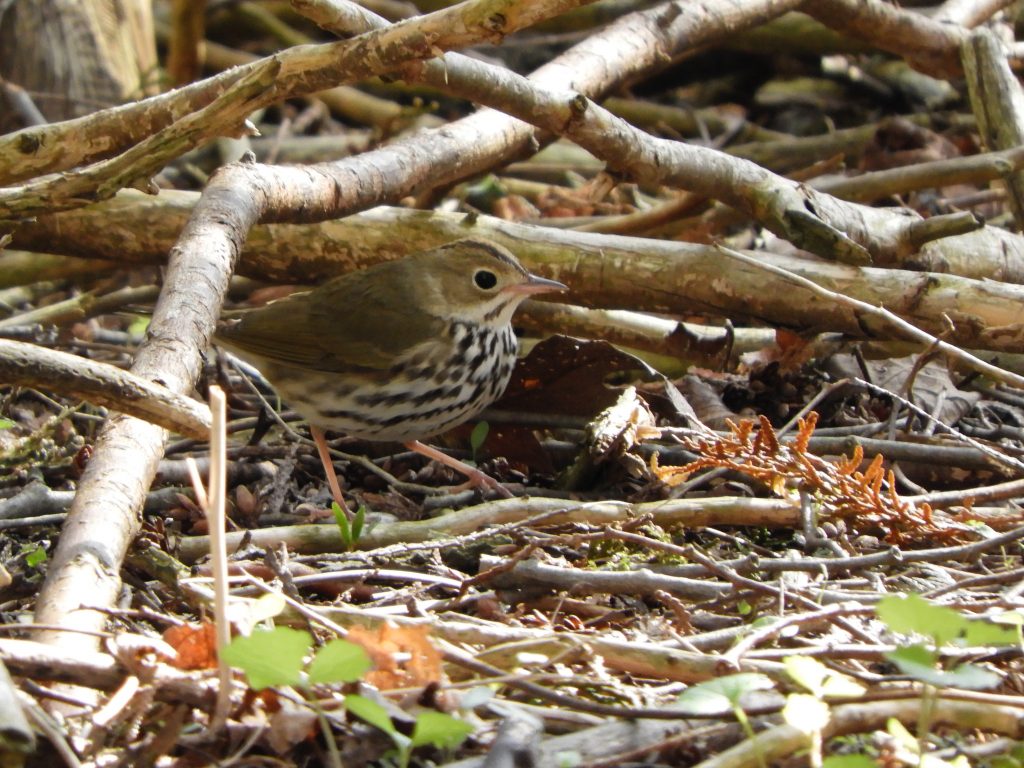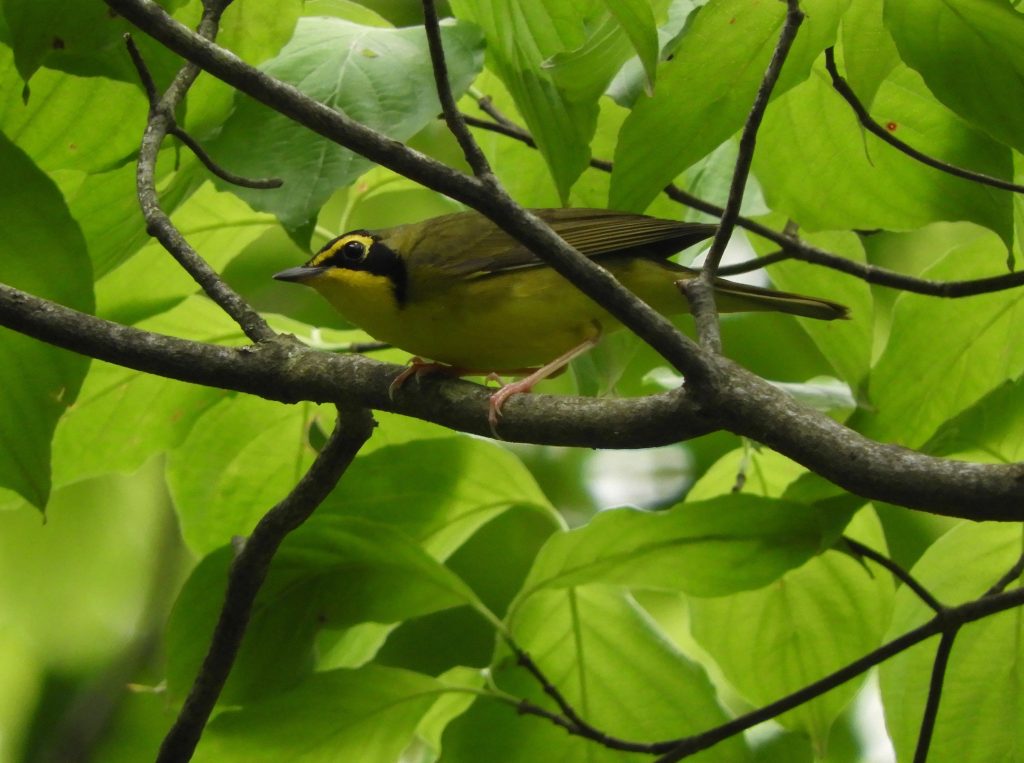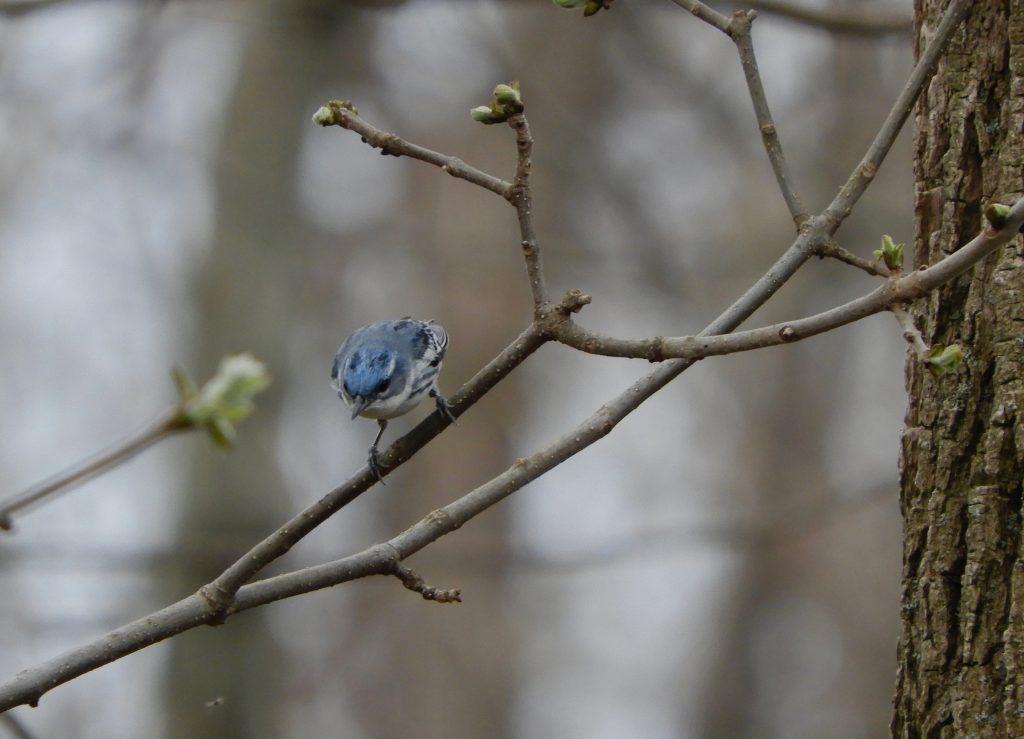May 17 2019. Clear Creek Metro Park, Ohio. Clear Creek Metro Park is a wilderness area where thick forest overlays a deep, eroded and multi-branched gorge. On the lush, watery valley floor you’re enveloped in green. The roads leading to it wind through modest-scale farms, it’s all very pretty and while the park’s name may suggest a suburban setting it is anything but. On the main, and only, road along the valley we were fortunate to meet a helpful park ranger who gave us many tips and suggested we take a winding trail through deep woods lush with ferns and ringing with warbler song.
Before we had set foot on the trail, I’d already noted in my field book Scarlet Tanager, Eastern Towhee, Pileated Woodpecker, possible Summer Tanager, and Yellow–throated Vireo. As we climbed the trail I thought I could hear Ovenbirds left and right of us but apparently I was wrong. There were indeed Ovenbirds, just a few; I know the song well when I hear it, but what I was hearing turned out to be Kentucky Warblers. It was all very baffling for a while until we came face to face with a Kentucky Warbler and then I put it all together. The songs are similar, both are emphatic and repetitive: the Ovenbird’s song is often written as tea-cher tea-cher tea-cher tea-cher, two distinct syllables, increasing volume and repeated perhaps half a dozen times; the Kentucky’s song, tor-eee tor-eee tor-eee continues for much longer and there is far less distinction between the syllables.

The Kentucky Warbler was a lifer for me and we saw one or two more of them that morning. In some ways they resemble our Common Yellowthroat with their Lone Ranger masks, but bright yellow spectacles distinguish the Kentucky and, in any case, they occupy completely different habitats.

The morning also included an Acadian Flycatcher. It’s a species I find fascinating, not because they are particularly colourful, cute, engaging or anything like that, but because, of their brief and explosive Ptzza! song; (well hardly a song) and because they are a much sought-after rarity in Ontario but bog-common everywhere on the eastern half of the continent south of us.

Dan and I agreed on Kentucky Warbler as Bird of the Day but there were other strong contenders: Cerulean Warblers would have been serious competition had they made themselves visible, but they are birds of the tree tops and searching for them can be hard on the neck. Then, late that evening, a Chuck–will’s–widow, also heard but not seen. Chuck-will’s-widows, like Whip-poor-wills, are named for the cadence of their crepuscular song. Maybe it’s because I’ve heard both a few times that I know their names to be truly onomatopoeic. If you can’t bring it to mind but think it worth a try, you might visit either of following links to the Macaulay Library, perhaps the best repository of North American bird vocalisations: Chuck-will’s-widow. Whip-poor-will